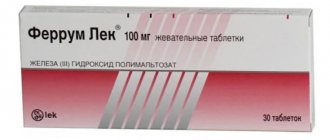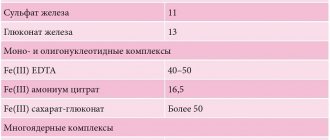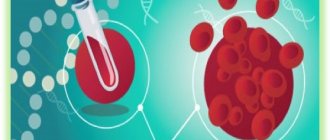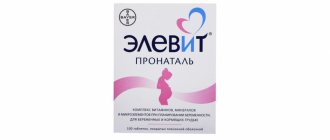Iron deficiency anemia in children is one of the types of anemia, which is characterized by iron deficiency, leading to impaired hemoglobin synthesis. On average, about 80% of cases of anemia in children are due to iron deficiency. The pathology is quite common: its incidence rate is about 40% among young children.
Treatment of iron deficiency anemia in children can be done at the CELT multidisciplinary clinic. We employ highly qualified specialists who will accurately diagnose and prescribe appropriate treatment. Symptoms and treatment of anemia in children will be discussed in this article. Don't forget: the sooner you seek professional medical help, the more effective the treatment will be.
What is iron deficiency anemia in a child?
Pediatricians around the world deal with this disease every day.
This group of diseases includes those associated with a decrease in the content of hemoglobin and/or red blood cells per unit volume of blood, which negatively affects the oxygen supply to the body’s tissues. Iron deficiency anemia is the most common of all anemias, accounting for 80% of all cases. In our country and Europe, the prevalence of iron deficiency anemia in young children is approximately 50%, and in older children - 20% or more.
Iron deficiency anemia in a child is a syndrome characterized by a lack of iron in the body. It develops against the background of pathological processes and is manifested by signs of anemia and sideropenia.
Iron is one of the main microelements in the body of both children and adults. The body has hemoproteins, which contain about 70% of the total amount of iron, which is associated with porphyrin. Iron is contained in hemoglobin, myoglobin, peroxidases, cytochromes, catalases, etc.
This element is stored in the body in the form of ferritin (the majority) and hemosiderin. In babies, most of the iron is stored in erythroid cells and very little in the muscles.
Diagnostics
Diagnosis of iron deficiency anemia in infants and older children in the multidisciplinary CELT clinic is carried out with the participation of various specialists:
- pediatrician;
- hematologist;
- pediatric gastroenterologist.
The child is examined, a medical history is taken, and a laboratory examination is performed, which makes it possible to establish a diagnosis of anemia and determine its degree. For the purpose of additional examination, it is possible to use an ultrasound diagnostic method (abdominal organs, pelvic organs).
Pathogenesis (what happens?) During iron deficiency anemia in a child:
Iron leaves the body through urine, feces, sweat, as well as through nails, hair and skin. Losses do not depend on gender. In children, about 0.1–0.3 mg is released into the external environment per 24 hours. In adolescents, the loss is a maximum of 0.5–1.0 mg. The child needs to receive 0.5–1.2 mg of iron per day. There is an increased need for infants and preschoolers. In order for a child to develop normally, the diet should contain 1.5 mg of iron per day in newborns, and at least 10 mg in children from 1 to 3 years old.
Iron deficiency provokes a tendency to infectious diseases of the baby's gastrointestinal tract and respiratory system. Without iron, brain structures cease to function normally. With a lack of iron, disruptions occur in the neuropsychic development of the baby. In children who were diagnosed with iron deficiency anemia in infancy, at the age of 3-4 years, disturbances in the transmission of nerve impulses from the centers of the brain to the organs of hearing and vision are found due to impaired myelination and, as a consequence, impaired nerve conduction.
Correction of iron deficiency in children
The goal of therapy for iron deficiency anemia (IDA) is to eliminate iron deficiency and restore its reserves in the body. This can only be achieved by eliminating the cause underlying IDA in the body.
The basic principles of treatment of IDA were formulated by L.I. Idelson in 1981:
- It is impossible to compensate for iron deficiency without medicinal iron-containing drugs.
- IDA therapy should be carried out primarily with oral iron preparations.
- IDA therapy should not be stopped after normalization of hemoglobin levels.
- Blood transfusions for IDA should be carried out only strictly for health reasons.
Previously, it was believed that iron deficiency could be eliminated by prescribing a diet containing apples, buckwheat, pomegranates and other plant foods containing iron. However, in the 60s. 20th century researchers have proven that iron contained in foods in the form of heme (meat, liver, fish) is better absorbed in the body than from other compounds. About 90% of iron is absorbed in the duodenum, the rest in the upper jejunum. In iron deficiency conditions, the absorption surface of the small intestine increases. Iron is absorbed in 2 forms:
- heme (10%), the sources of which are hemoglobin and myoglobin, which are part of products of animal origin (meat, fish, poultry, liver) (Table 1);
- non-heme (90%), the sources of which are products of plant origin (vegetables, fruits, cereals) (Table 2).
The amount of iron received during the day from food contains about 10–12 mg of iron (heme + non-heme), but only 1–1.2 mg of this trace element is absorbed. It has been established that the bioavailability of heme iron in food products is higher than that of non-heme compounds and amounts to 25–30%.
Most dietary iron is in the non-heme form. The bioavailability of iron from cereals, legumes, tubers, vegetables and fruits is significantly lower than from heme compounds, and largely depends on the predominance of factors in the diet that inhibit or potentiate intestinal ferroabsorption (Table 3).
Despite the high iron content in some products of plant origin, they are not able to provide the child’s body with it. Substances present in food products of plant origin (tannins, phytins, phosphates) form insoluble compounds with Fe (III) and are excreted in feces. There is also information about the adverse effect of dietary fiber, which is rich in cereals, fresh vegetables, and fruits, on the absorption of iron. In the intestines, dietary fiber is practically not digested; iron is fixed on their surface and excreted in feces. On the contrary, ascorbic acid and animal protein (meat, fish) increase the bioavailability of iron, which increase the absorption of the microelement. It should also be noted that products made from meat, liver, and fish, in turn, increase the absorption of iron from vegetables and fruits when used simultaneously.
A diet that is complete and balanced in terms of its main ingredients can only “cover” the body’s physiological need for iron, but does not eliminate its deficiency.
The natural prevention of IDA in children in the first months of life is exclusive breastfeeding for up to 4–6 months. It is known that the concentration of iron in human milk is only 0.2–0.4 mg/l, but the absorption of iron from it reaches 50%, which meets the baby’s needs for the first 4–6 months. By the time a child’s body weight doubles (5–6 months), antenatal iron reserves in his body are depleted.
In order to prevent IDA during artificial feeding, it is advisable to use iron-enriched formulas in children at risk for developing IDA. They are prescribed to full-term children at risk (from twins, triplets, with a large increase in weight), starting from 3-5 months of life, and to premature babies - from 1.5-2 months. The iron content in formulas for artificial feeding of children in the first half of life is 3–5–8 mg/l of the mixture, and for children in the second half of life – 10–14 mg/l.
The inclusion of iron-fortified complementary foods (fruit juices, fruit and vegetable purees, instant cereals) in children's diets significantly increases the amount of iron entering the child's body with food.
For children aged 4–6 months who are breastfed, and infants after 6 months of life who do not receive iron-fortified nutrition, it is advisable to prescribe iron supplements in a prophylactic dose of 1–2 mg/kg/day until 12–18 months of life.
IDA in young children is associated with early consumption of cow's or goat's milk, which contains high levels of protein. It should be noted that the development of IDA in these children is associated not only with low levels of iron in cow's milk and poor absorption, but also with the loss of iron due to microdiapedetic intestinal bleeding. Numerous studies have noted the relationship between the amount of non-adapted product consumed (milk, kefir) and the severity of microdiapedetic intestinal blood loss in infants. It was noted that sensitivity to unadapted products decreases with age and after 2 years of life, microdiapedetic intestinal bleeding is not observed when taking cow's milk. The mechanism underlying the increased excretion of hemoglobin in feces due to the intake of unadapted dairy products in young children is not precisely known. Some authors associate microdiapedetic intestinal bleeding with intolerance to cow's milk proteins.
The choice of drug for the correction of IDA is given special importance, since the duration of treatment can range from several weeks to several months. In this case, not only effectiveness is important, but also the absence of side effects and complications, adherence to the therapy, especially in pediatric practice.
Currently, all iron preparations are divided into two groups (Table 4):
- ionic iron-containing preparations (salts, polysaccharide iron compounds);
- nonionic compounds, which include drugs represented by the hydroxide-polymaltose complex (HPC) of ferric iron.
Therapy for iron deficiency conditions should be aimed at eliminating the cause and simultaneously replenishing iron deficiency with medicinal Fe-containing drugs.
Treatment of iron deficiency conditions should be carried out primarily with iron preparations for oral administration.
Oral administration of Fe preparations:
- increases hemoglobin levels only 2–4 days later than with parenteral administration;
- unlike parenteral, it extremely rarely leads to serious side effects;
- even if the diagnosis is incorrect, it does not lead to the development of hemosiderosis.
Parenteral administration of iron supplements is indicated only for special indications (poor intestinal absorption syndrome, condition after extensive resection of the small intestine).
Requirements for oral iron preparations used in pediatric practice:
- good bioavailability;
- high security;
- pleasant organoleptic properties;
- various dosage forms convenient for patients of all ages;
- compliance.
For young children, it is preferable to prescribe iron-containing drugs, available in the form of drops or syrup. Actiferrin (drops, syrup), Maltofer (drops, syrup), Ferrum Lek (syrup), Hemofer (drops) are good for children of this age group (Table 5).
For adolescent children, it is best to prescribe iron preparations such as Ferrum Leka (chewable tablets) or Tardiferon and Ferrogradument, which are slowly absorbed, ensuring prolonged and uniform absorption of medicinal iron in the intestines. As a rule, these drugs are well tolerated by patients.
After choosing an iron-containing drug and the method of its use, it is necessary to determine the daily daily dose of the drug and the frequency of administration (Table 6).
Recommended doses of ferrous iron are based on data showing that only 10-15% of the iron supplied to the body is absorbed.
Iron (III) preparations - GPC are used in children with IDA of different ages in a therapeutic dose of 5 mg/kg/day.
For latent iron deficiency, all iron preparations are used at half the therapeutic dose.
Preventive doses of iron supplements:
- for children under 3 years old – 1–1.5 mg/kg/day;
- for children over 3 years old – 1/2 the daily therapeutic dose.
It is known that treatment with salt preparations may be accompanied by stool disorders, and therefore therapy with ferrous iron preparations must be started with a dose equal to 1/4–1/2 of the calculated therapeutic dose, followed by gradual achievement of the full dose over 7–14 days. The rate of “gradual increase” of the dose to the therapeutic dose depends both on the severity of iron deficiency, and on the state of the gastrointestinal tract and individual tolerance of the drug. This technique allows you to select an individual dose depending on tolerability and reduce the risk of side effects of therapy with iron salt preparations.
It is well known that iron salt preparations in the intestinal lumen interact with food components and medications, complicating the absorption of iron. In this regard, iron salt preparations are recommended to be prescribed 1 hour before meals. The administration of Fe(III) preparations - GPC does not require the use of a gradual dose increase technique. Drugs in this group are prescribed immediately in full dose, regardless of food, since food does not affect their absorption.
The therapeutic effect of oral iron intake appears gradually. Initially, clinical improvement is noted and only after some time does hemoglobin normalize. The first positive clinical sign that appears during treatment with iron supplements is the disappearance or reduction of muscle weakness. The latter is due to the fact that iron is part of the enzymes involved in the contraction of myofibrils. On days 10–12 from the start of treatment, the content of reticulocytes in the peripheral blood increases. The increase in hemoglobin can be gradual or abrupt. Most often, the onset of an increase in hemoglobin levels occurs 3–4 weeks after the start of therapy. As numerous studies have shown, the disappearance of clinical manifestations of the disease is observed after 1–2 months of therapy, and the disappearance of tissue sideropenia occurs after 3–6 months of treatment. The daily dose of elemental iron after normalization of hemoglobin levels should correspond to 1/2 of the therapeutic dose (Table 7). Early cessation of treatment with iron preparations usually leads to relapses of IDA. The duration of the main course of treatment with iron supplements is 6–10 weeks, depending on the severity of the identified iron deficiency anemia. The duration of a preventive course of iron supplements in order to create an iron depot in the body is:
- for mild anemia – 1.5–2 months;
- for moderate anemia – 2 months;
- for severe anemia – 2.5–3 months.
Criteria for the effectiveness of treatment with iron supplements:
- the appearance of reticulocyte crisis on days 7–10 of treatment;
- increase in hemoglobin level – 10 g/l per week;
- complete normalization of clinical and laboratory parameters by the end of the course of treatment.
The refractoriness of iron deficiency anemia is due to the inadequacy of the prescribed therapy or anemia not associated with iron deficiency!
Parenteral drugs in the treatment of iron deficiency anemia should be used only according to strict indications!
Indications for parenteral administration of iron supplements:
- Short small bowel syndrome.
- Malabsorption syndrome.
- Nonspecific ulcerative colitis.
- Chronic enterocolitis.
It is better to use parenteral drugs not daily, but at intervals of 1–2 days. In this case, for the first 1–3 administrations, you can use half the dose.
Considering the duration of ferrotherapy, the choice of drugs for the correction of IDA in young children requires special attention. Both iron salt preparations and Fe(III)-HPA polymaltose complex preparations are effective in the treatment of VSD. Side effects and adverse events during oral ferrotherapy of IDA are mainly associated with exceeding recommended doses and are more often manifested by dyspepsia. Adverse reactions and undesirable effects that may develop during ferrotherapy in children are summarized in Table 8.
Parenteral iron supplements should be used only strictly for specific indications.
Blood or red blood cell transfusions for IDA are carried out extremely rarely and strictly for health reasons. The criteria for blood transfusion are a decrease in hemoglobin below a critical level in combination with signs of impaired central hemodynamics, hemorrhagic shock, anemic precoma, hypoxic syndrome (Table 9). Blood transfusion can also be carried out when hemoglobin and hematocrit values are higher than critical, if there is massive acute blood loss.
The effect of blood transfusions for IDA is short-term. A negative effect of blood transfusions on erythropoiesis was noted. In addition, there remains a high risk of transfusion infection of the recipient. If there are vital indications for replacement blood transfusion, preference is given to red blood cells or washed red blood cells at the rate of 10–15 ml/kg. Older children are usually transfused from 150 to 250 ml. Whole blood has not been used in pediatric practice in recent years.
Prevention of IDA in children includes:
1. Antenatal prevention:
- For all women in the second half of pregnancy, it is advisable to prescribe oral ferrotherapy or multivitamins fortified with iron.
2. Postnatal prevention:
- natural feeding with timely introduction of complementary foods (meat puree from 6–7 months);
- for children who are bottle-fed, from 2–3 months the introduction of formulas enriched with iron (12 mg/l);
- For premature babies, children from multiple pregnancies, those born with a large body weight, with rapid rates of weight and height gain, from the 3rd month to the end of the first half of the year, it is recommended to take prophylactic iron supplements in a dose equal to 1/3–1/2 of the daily therapeutic dose of elemental iron. iron (1.0–1.5 mg/kg/day).
Vaccination of children with IDA is carried out after normalization of hemoglobin levels.
Removal from dispensary registration is carried out after a year.
I. N. Zakharova , Doctor of Medical Sciences, Professor N. A. Korovina , Doctor of Medical Sciences, Professor A. L. Zaplatnikov , Doctor of Medical Sciences, Professor N. E. Malova , Candidate of Medical Sciences RMAPO , Moscow
Source : TREATING DOCTOR








